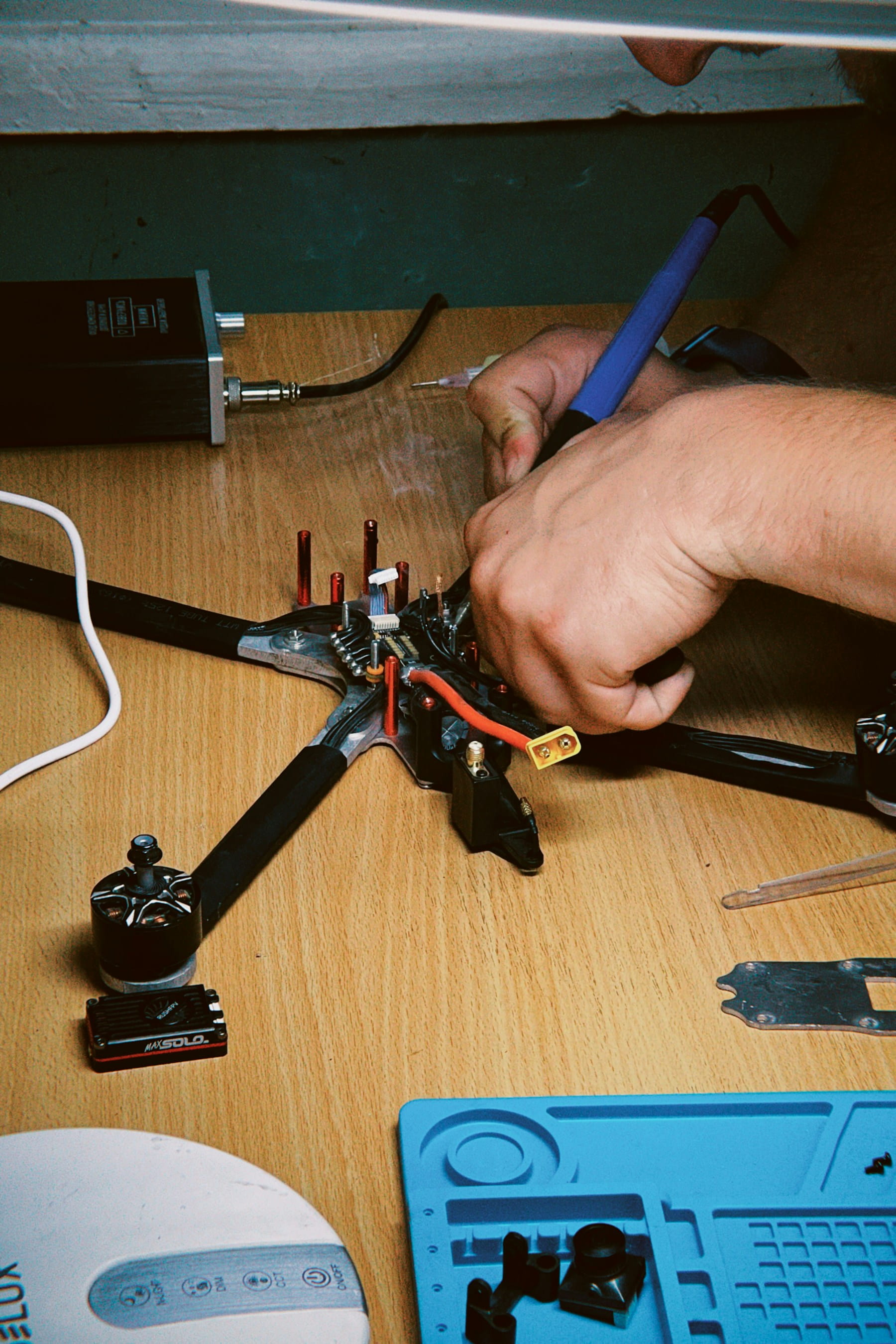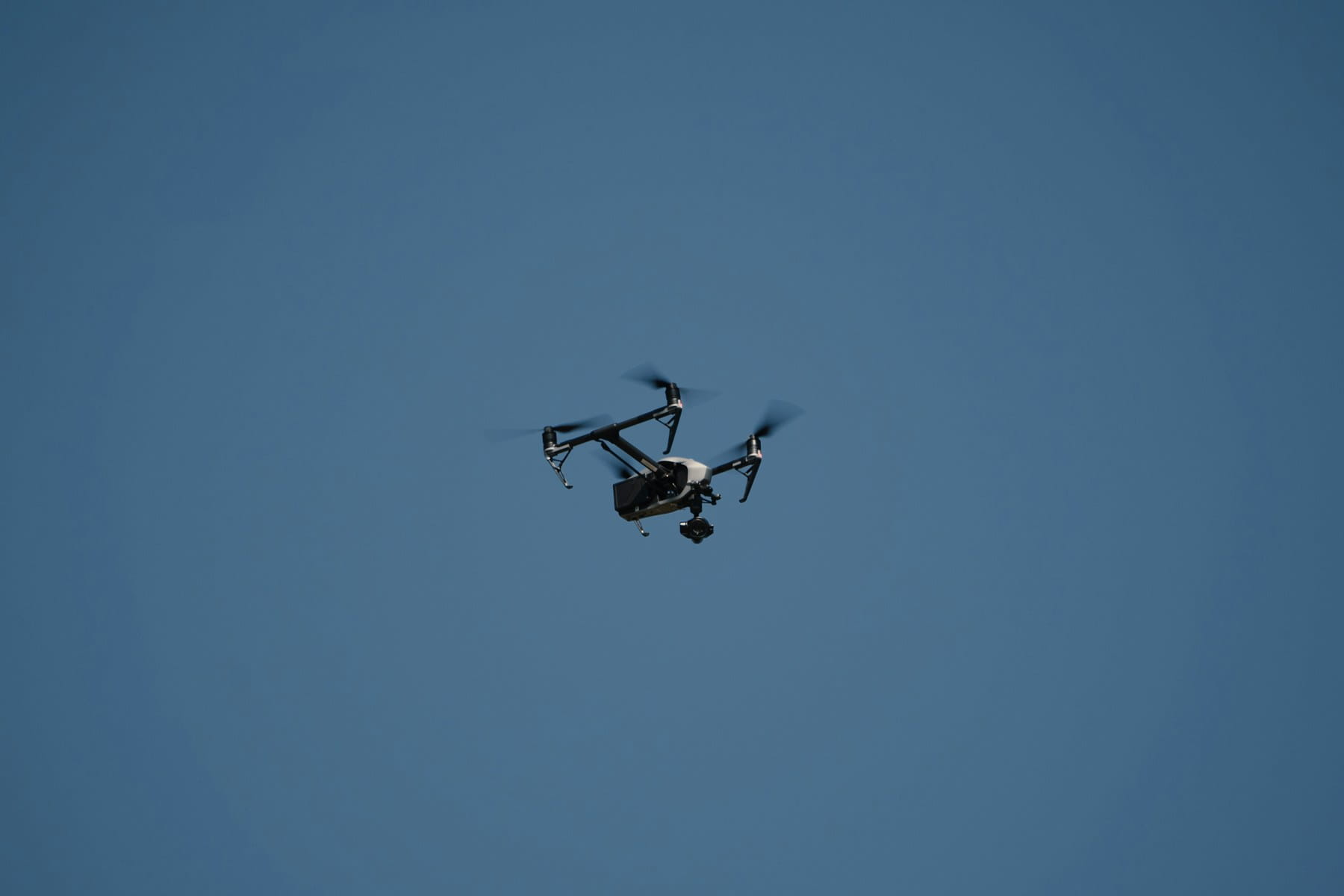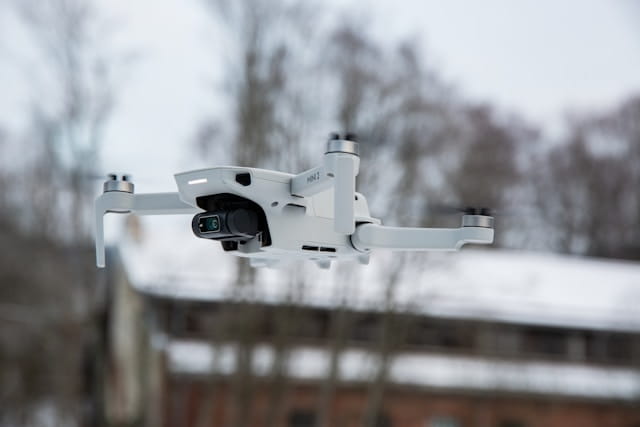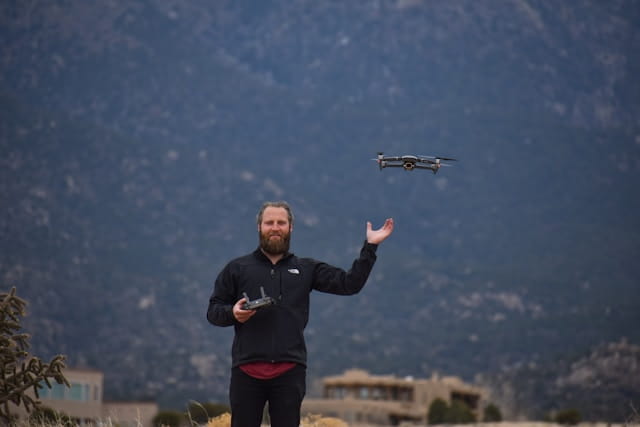Effective drone maintenance involves systematic inspections, scheduled intervals, component-specific care, and environmental considerations to ensure optimal fleet performance, safety, and regulatory compliance in demanding operational environments.
Drones have become mission-critical equipment across industries, from construction surveys to emergency response operations. Yet many operators treat maintenance as an afterthought – until costly failures ground their fleet during peak season. The reality? A single catastrophic failure often costs more than preventive maintenance for an entire year.
Professional drone operations demand systematic maintenance approaches. Unlike hobbyist aircraft that might fly occasionally, commercial drones face demanding environments: dusty construction sites, salt air near coastlines, extreme temperatures, and intensive flight schedules that push components to their limits.
The challenge isn't just keeping drones airborne. It's maintaining peak performance while meeting regulatory requirements, protecting significant equipment investments, and ensuring operational readiness when clients depend on your services.
Table of contents
- Understanding drone maintenance fundamentals
- Pre-flight inspection procedures
- Scheduled maintenance intervals
- Component-specific maintenance requirements
- Environmental considerations
- Maintenance documentation and record keeping
- Common maintenance issues and solutions
- Professional maintenance services vs in-house capabilities
- Cost management strategies
- Fleet maintenance scaling
Understanding drone maintenance fundamentals
Drone maintenance encompasses three distinct categories: preventive, corrective, and predictive maintenance. Each serves specific purposes within a comprehensive maintenance strategy.
Preventive maintenance involves scheduled inspections and component replacements before problems occur. This approach reduces unexpected failures and extends equipment lifespan. Corrective maintenance addresses issues after they arise – typically more expensive and disruptive to operations. Predictive maintenance uses flight data analysis to anticipate component failures, though this remains challenging for smaller operators without sophisticated monitoring systems.
The foundation of effective maintenance lies in understanding how flight conditions affect aircraft systems. High-vibration environments stress mechanical connections. Dust infiltration damages sensitive electronics. Temperature cycling causes expansion and contraction that loosens fasteners over time.
Flight hours alone don't tell the complete maintenance story. A drone conducting smooth mapping flights accumulates wear differently than one performing aggressive inspection maneuvers around industrial structures. Similarly, aircraft stored in controlled environments require different maintenance protocols than those exposed to marine or desert conditions.
Regulatory framework
Aviation authorities establish minimum maintenance requirements for commercial drone operations. These regulations typically mandate pre-flight inspections, scheduled maintenance intervals, and detailed record keeping as part of comprehensive compliance management. However, regulatory minimums rarely align with optimal maintenance practices for demanding operations.
The European Union Aviation Safety Agency (EASA) requires specific maintenance programs for certain operations, while the FAA emphasizes operator responsibility for airworthy aircraft condition. Both approaches recognize that maintenance requirements scale with operational complexity and risk profiles.
Smart operators exceed regulatory minimums. They develop maintenance protocols tailored to their specific operational environment, flight profiles, and equipment configurations while ensuring proper pilot training. This proactive approach reduces long-term costs and operational disruptions.
Pre-flight inspection procedures
Pre-flight inspections represent the first line of defense against in-flight failures. These checks should follow standardized procedures using comprehensive pre-flight checklists, regardless of pilot experience or time pressures. Consistency prevents oversight of critical items.
Visual inspections begin with airframe condition. Examine propeller blades for cracks, chips, or deformation. Check motor mounts for secure attachment and proper alignment. Inspect landing gear for damage that might affect stability during takeoff or landing.
Battery inspection requires particular attention. Look for physical damage, swelling, or corrosion at connection points. Test voltage levels and verify proper charging indicators. Damaged batteries pose fire risks and can cause sudden power loss during flight.
Electronic system checks
Power on sequences should follow manufacturer specifications. Verify GPS satellite acquisition, compass calibration accuracy, and communication link strength. Test failsafe systems by temporarily interrupting control signals – the aircraft should respond according to programmed emergency procedures.
Gimbal and camera systems require separate inspection protocols. Check for smooth movement throughout the full range of motion. Verify image quality and stability compensation effectiveness. Clean lens surfaces and protective filters as needed.
Control surface movement on fixed-wing aircraft demands careful examination. Verify proper direction response to control inputs. Check for binding or excessive play in control linkages. Test automated flight control responses during taxi operations when possible.
Scheduled maintenance intervals
Maintenance intervals depend on multiple factors: flight hours, operational environment, manufacturer recommendations, and observed wear patterns. Generic schedules rarely optimize maintenance effectiveness or cost efficiency.
The following table outlines typical maintenance intervals for commercial drone operations:
| Maintenance Category | Flight Hours | Calendar Time | Primary Focus |
|---|---|---|---|
| Level 1 (Basic) | Every 25 hours | Monthly | Visual inspection, cleaning, firmware updates |
| Level 2 (Intermediate) | Every 50 hours | Quarterly | Component replacement, calibration, detailed inspection |
| Level 3 (Comprehensive) | Every 100 hours | Annually | Major component overhaul, system testing, certification |
These intervals serve as starting points. Operators should adjust schedules based on actual wear patterns observed during inspections. Aircraft operating in harsh environments may require more frequent attention, while those in controlled conditions might extend intervals safely.
Flight hour tracking systems help maintain accurate schedules. Modern fleet management platforms automatically track usage and generate maintenance alerts. Manual tracking remains viable for smaller operations but requires disciplined record keeping.
Seasonal maintenance considerations
Seasonal transitions create unique maintenance requirements. Spring operations often require extensive cleaning after winter storage. Summer heat stress tests cooling systems and battery performance. Fall preparation includes weatherproofing checks before winter storage.
Cold weather operations demand special attention to battery performance, condensation management, and component brittleness. Hot weather creates different challenges: thermal stress, reduced battery capacity, and electronic component reliability issues.
Operators in regions with distinct seasons benefit from comprehensive seasonal maintenance programs. These might include detailed inspections before peak operating seasons, protective treatments for long-term storage, and climate-specific component replacements.
Component-specific maintenance requirements
Different aircraft systems have unique maintenance needs and failure patterns. Understanding these requirements helps prioritize maintenance activities and budget planning.
Propulsion systems
Electric motors in multirotors typically require minimal maintenance beyond cleaning and connection inspection. However, bearing wear becomes apparent through increased vibration or unusual noise. Motor replacement often proves more cost-effective than repair attempts.
Fixed-wing aircraft engines, whether electric or combustion-powered, demand more intensive maintenance. Combustion engines require fuel system cleaning, air filter replacement, and compression testing. Electric motors need cooling system inspection and power controller examination.
Propeller maintenance varies significantly between materials and designs. Carbon fiber propellers resist fatigue but can fail catastrophically if damaged. Plastic propellers show wear gradually but may develop stress cracks over time. Regular inspection prevents in-flight failures that can cause extensive collateral damage.
Battery systems
Battery maintenance directly affects flight safety and operational costs. Lithium polymer batteries used in most commercial drones have specific care requirements that significantly impact lifespan and reliability.
Proper charging protocols prevent cell damage and fire risks. Use manufacturer-approved chargers with appropriate settings for battery chemistry and capacity. Monitor charging temperatures – excessive heat indicates potential problems requiring immediate attention.
Storage conditions affect battery longevity dramatically. Store batteries at approximately 50% charge in cool, dry environments. Extreme temperatures during storage can permanently reduce capacity or create safety hazards.
Battery cycling – the process of fully discharging and recharging – helps maintain accurate fuel gauge readings and prevents cell imbalance. However, excessive cycling reduces overall battery life. Balance cycling requirements with operational needs.
Electronic systems
Flight control systems represent the most complex maintenance challenge in modern drones. Software updates often address known issues and improve performance, but they can also introduce new problems. Test all critical functions after firmware updates before returning aircraft to service.
Sensor calibration maintains flight stability and navigation accuracy. IMU calibration should follow specific environmental conditions and procedures. Compass calibration requires magnetic interference-free environments and multiple orientation procedures.
Communication systems need regular testing to verify range and reliability. Antenna connections loosen over time due to vibration. Replace damaged antennas immediately – compromised communication poses serious safety risks.
Environmental considerations
Operating environment significantly influences maintenance requirements and component longevity. Coastal operations expose aircraft to salt air that accelerates corrosion. Desert environments introduce fine sand that infiltrates mechanical systems. Industrial sites present chemical contamination risks.
Moisture management
Humidity creates multiple maintenance challenges. Condensation can form inside electronic enclosures during temperature changes. Water infiltration damages circuits and causes corrosion. Proper sealing and ventilation design help manage moisture issues.
Post-flight procedures for moisture exposure should include immediate drying and inspection. Remove battery compartment covers to allow air circulation. Inspect connection points for corrosion indicators. Store aircraft in controlled environments when possible.
Silica gel packets placed in storage cases help absorb residual moisture. Replace packets regularly as they lose effectiveness over time. Some operators use electric drying cabinets for equipment exposed to extreme moisture conditions.
Temperature extremes
Extreme temperatures affect multiple aircraft systems simultaneously. Cold weather reduces battery capacity and increases plastic brittleness. Hot conditions stress electronic components and accelerate chemical degradation processes.
Pre-flight warm-up procedures help acclimate systems to operating temperatures. Cold batteries should reach operating temperature before use. Hot weather operations might require cooling periods between flights to prevent thermal damage.
Component selection for extreme temperature operations requires careful consideration. Standard components often have limited temperature ranges compared to industrial or military specifications. Upgraded components cost more initially but reduce maintenance requirements in challenging environments.
Maintenance documentation and record keeping
Comprehensive maintenance records serve multiple purposes: regulatory compliance, warranty protection, trend analysis, and resale value preservation. Digital record keeping systems provide advantages over paper-based approaches.
Maintenance logs should capture specific information for each service event: date, flight hours, work performed, parts replaced, technician identification, and return-to-service authorization. Photograph before and after conditions when appropriate, following regulatory compliance requirements.
Digital documentation systems
Modern fleet management platforms integrate maintenance tracking with flight operations. These systems automatically calculate service intervals, generate work orders, and maintain historical records. Integration reduces administrative burden while improving record accuracy.
Cloud-based systems provide access from multiple locations and automatic backup capabilities. Mobile applications allow field technicians to update records immediately rather than transcribing notes later. Digital signatures provide authentication for critical maintenance actions.
Component traceability becomes increasingly important as fleets grow. Serial number tracking helps identify batch-specific issues and warranty claims. Parts inventory management prevents delays waiting for replacement components.
Quality assurance processes help maintain record accuracy and completeness. Regular audits identify gaps or inconsistencies requiring attention. Standardized procedures reduce variability between different technicians or service providers.
Common maintenance issues and solutions
Experience reveals predictable patterns in drone maintenance requirements. Understanding common issues helps operators prepare appropriate solutions and spare parts inventory.
Vibration-related failures top the list of common problems. Loose connections, worn mounting hardware, and fatigue cracks all result from operational vibrations. Regular inspection and proper torque specifications prevent most vibration-related issues.
Connection and fastener problems
Electrical connections loosen over time due to thermal cycling and vibration. Connector corrosion creates intermittent failures that can be difficult to diagnose. Clean connections regularly and apply appropriate protective treatments.
Threaded fasteners require periodic inspection and retorquing. Use thread-locking compounds on critical fasteners to prevent loosening. Replace fasteners showing signs of wear or damage – the cost of preventive replacement far exceeds failure-related repairs.
Quick-release mechanisms convenient for field operations require regular cleaning and lubrication. Sand and debris can prevent proper engagement, creating safety hazards during flight operations. Manufacturer-specified lubricants prevent contamination while maintaining proper function.
Sensor drift and calibration issues
Navigation sensors gradually drift from calibrated positions due to temperature cycling, vibration, and component aging. Regular calibration maintains flight performance and prevents control anomalies.
GPS receivers generally maintain accuracy over time but can be affected by electromagnetic interference or antenna damage. Compass sensors prove more sensitive to magnetic interference and physical shock. IMU sensors may require factory recalibration after significant impacts.
Calibration procedures vary significantly between manufacturers and aircraft types. Follow specific instructions precisely – improper calibration can create dangerous flight characteristics. Document calibration dates and results for trend analysis.
Professional maintenance services vs in-house capabilities
The decision between professional maintenance services and in-house capabilities depends on fleet size, technical expertise, operational requirements, and cost considerations. Each approach offers distinct advantages and limitations.
Professional maintenance services provide specialized expertise and proper equipment for complex repairs. Certified technicians understand manufacturer specifications and warranty requirements. Service centers maintain parts inventory and can handle multiple aircraft simultaneously.
Service provider evaluation
Selecting maintenance providers requires careful evaluation of capabilities, certifications, turnaround times, and quality standards. Request references from similar operations and verify insurance coverage for work performed.
Geographic location affects service convenience and emergency support availability. Local providers offer faster response times but may have limited expertise with specific aircraft types. Manufacturer-authorized service centers provide highest expertise levels but may require shipping aircraft over long distances.
Service agreements can provide predictable maintenance costs and guaranteed response times. These arrangements work well for larger fleets with consistent utilization patterns. Smaller operators might prefer pay-per-service arrangements for better cost control.
Developing in-house capabilities
In-house maintenance capabilities provide greater control over scheduling and quality standards. Technical staff familiar with specific operational requirements can optimize maintenance procedures for actual usage patterns.
Initial investment in tools, training, and spare parts inventory represents significant upfront costs. Ongoing training requirements keep pace with evolving technology and manufacturer updates. Staff certification and insurance considerations add complexity to in-house programs.
The break-even point between in-house and contracted maintenance depends on fleet size and utilization rates. Generally, fleets with more than five aircraft operating regularly justify in-house capabilities. Smaller operations often benefit from professional services supplemented by basic preventive maintenance.
Cost management strategies
Maintenance costs can consume substantial portions of operating budgets without careful management. Strategic approaches help optimize maintenance effectiveness while controlling expenses.
Bulk purchasing of common consumable items reduces per-unit costs. Coordinate purchases with other operators when possible. However, avoid excessive inventory that ties up working capital or becomes obsolete due to model changes.
Predictive maintenance approaches
Data-driven maintenance strategies use operational information to optimize service intervals. Flight data analysis can reveal patterns indicating impending component failures. This approach reduces unnecessary maintenance while preventing unexpected breakdowns.
Condition monitoring systems track component performance parameters during normal operations. Vibration analysis, temperature monitoring, and electrical system diagnostics provide early warning of developing problems. These systems require initial investment but can reduce total maintenance costs significantly.
Component life tracking helps optimize replacement intervals. Rather than relying solely on manufacturer recommendations or calendar schedules, track actual component performance to determine optimal service lives for specific operational conditions.
Warranty and service contract management
Manufacturer warranties provide valuable protection during initial operational periods. Understand warranty terms and exclusions to maximize coverage benefits. Unauthorized maintenance or improper operation can void warranty protection.
Extended warranty programs may provide cost advantages for expensive components. Compare extended warranty costs with self-insurance reserves to determine the best approach for your operation. Consider total cost of ownership rather than just initial purchase prices.
Service contracts with predictable monthly costs help budget planning and cash flow management. These arrangements often include priority service and discounted parts prices. Evaluate contract terms carefully to ensure alignment with operational requirements.
Fleet maintenance scaling
As drone fleets grow, maintenance complexity increases exponentially rather than linearly. Larger fleets require different approaches to maintain efficiency and cost control.
Standardization becomes critical for larger operations. Using similar aircraft models reduces spare parts inventory requirements and training complexity. However, operational requirements may necessitate diverse aircraft capabilities that complicate maintenance procedures.
Centralized vs distributed maintenance
Centralized maintenance facilities provide specialized capabilities and economies of scale. Technician expertise develops more rapidly when focused on similar aircraft types. Spare parts inventory optimization reduces overall investment requirements.
Distributed maintenance approaches position maintenance capabilities closer to operational sites. This reduces transportation time and costs while providing faster return-to-service capabilities. However, distributed approaches require higher overall investment in tools and training.
Hybrid approaches combine centralized capabilities for major maintenance with distributed capabilities for routine service. This strategy optimizes both cost and operational availability while maintaining quality standards.
Fleet management software becomes essential for larger operations. These systems track individual aircraft status, schedule maintenance activities, and optimize resource allocation. Integration with parts inventory and technician scheduling provides comprehensive operational visibility.
Why Professional Drone Maintenance Matters for Commercial Operations
Professional drone operations require systematic approaches to equipment maintenance that go far beyond basic cleaning and inspection. Success depends on understanding component-specific requirements, environmental factors, and operational demands that affect maintenance needs while building sustainable competitive advantages.
- Cost reduction: Proactive maintenance prevents expensive failures and extends equipment lifespan
- Safety enhancement: Systematic inspections identify potential hazards before they become incidents
- Operational reliability: Well-maintained fleets deliver consistent performance when clients depend on your services
- Regulatory compliance: Comprehensive maintenance documentation satisfies aviation authority requirements
Fast Facts: Drone Maintenance Benefits
| Maintenance Approach | Cost Impact | Reliability Benefit | Safety Improvement |
|---|---|---|---|
| Reactive (Fix When Broken) | High emergency repair costs | Unpredictable downtime | Increased failure risks |
| Preventive (Scheduled) | Predictable maintenance costs | Improved availability | Reduced incident rates |
| Predictive (Data-Driven) | Optimized maintenance costs | Maximum uptime | Proactive risk management |
Getting Started with Professional Maintenance
- Assess current practices and identify gaps in systematic maintenance approaches
- Develop standardized procedures using proven checklists and protocols
- Implement tracking systems for flight hours, maintenance intervals, and component history
- Train personnel in proper inspection techniques and safety protocols
- Monitor and optimize maintenance effectiveness through data analysis and continuous improvement
Essential preparation: Before implementing comprehensive maintenance programs, ensure your team understands how maintenance integrates with broader operational compliance and safety management systems.
In Summary
The investment in proper maintenance protocols pays dividends through reduced operational disruptions, extended equipment life, and maintained safety standards. Operators who treat maintenance as a strategic capability rather than a necessary expense typically achieve better long-term financial performance and competitive positioning.
Ready to Transform Your Drone Maintenance?
Join professional operators who have streamlined their maintenance operations through systematic approaches and integrated management platforms. Whether you're managing a single aircraft or complex multi-platform fleets, proper maintenance foundations enable sustainable growth and operational excellence.
Start your free trial today — no credit card required.
Or book a demo to see how DroneBundle integrates maintenance tracking with compliance management, operational planning, and performance analytics in a single platform designed specifically for professional drone operations.
Transform your maintenance from reactive repairs to proactive fleet management. With comprehensive tracking capabilities and systematic procedures, every maintenance action becomes an investment in long-term operational success and client confidence.




